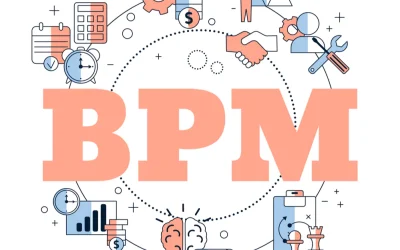RPA is not a permanent fix, but for individual workers, the software could save hours each week.
Fresh out of 2020 – the year of the pandemic and everything ‘unprecedented’, including the pace of digital transformation – and implementing automation in all functions of the business remains a priority.
When we talk of automation in the white-collar world of work, more often than not, we’re talking about the use of Robotic Process Automation Software (RPA).
Referring to software that automates repetitive, logical, and traditionally manual tasks, RPA acts as a bridge across systems, allowing companies to access several applications at once. It serves as a literal replacement for human workers, emulating the same keystrokes and mouse clicks as a human employee.
This technology saves time and money, boosts efficiency, and cuts out errors caused by human fatigue or distraction, and those benefits have led to the emergence of a vast and evolving RPA marketplace, predicted to hit an estimated worth of close to GBP 20 billion by 2027.
Probably RPA’s main questions is over how the software should be deployed, and just how permanent a solution it can offer.
A band-aid solution?
Early success with RPA implementation can foster a tendency to apply it everywhere.
Of course, any technology whose purpose is to automate the processes established by former teams of human workers is not one that promotes actual digital transformation. In simple terms, RPA at its core is not yet ‘smart’, it essentially offers a script to automate a prescribed process.
Within this remit, RPA can reliably automate complex legacy processes. But if an application is updated or replaced, scripts will no longer function properly and the RPA solution needs to change accordingly with the updated legacy process.
RPA can entrench bad habits if used in the long term by stringing along with outdated technology and compounding existing silos between teams and systems. This is a “band-aid approach”, and it means that digital transformation gets pushed further away, not closer.
Indeed, according to research by HFS, 30% of RPA projects fail entirely. For those organizations that keep projects running, maintenance, and control issues are burning a hole in their pockets. According to Forrester, close to half of organizations suffer from poor customer support and engagement due to bot breakage on a weekly basis, or more regularly.
The reality is that if a band-aid is there long enough, you’ll forget that it was supposed to be a temporary solution. You’ll not only further entrench your technical debt for that legacy system, but you’ll add to it by having two systems to maintain instead of just one. At some point you’ve got to fix the issue.
In the RPA and automation space, the race is now on to make software that’s more ‘intelligent’ – that can learn and adapt, and change its processes in a way that optimizes the output.
Where RPA mimics human actions, Intelligent Process Automation (IPA) aims to mimic human intelligence. Using technology such as computer vision, document understanding, and machine learning, IPA can automate processes that don’t have a rules-based structure, handle unstructured data, and provide answers based on subjective probability.
This is surely the direction RPA at large will shift towards, but it’s not to say that the software in its more pure form cannot benefit the business at an individual level of automation.
RPA for the individual
Thanks to the rise of low-code and vast improvements to user interfaces, RPA has become a tool that business users without coding skills, or ‘citizen developers’, can pick up and use quickly within the confines of the processes that they are most familiar with.
This is not RPA implemented at the company level, guided by a Centre of Excellence, it is the use of automation as required by an individual. It can make lives easier and more productive, but by helping to sew automation into every little seam at the personal and departmental level, it can contribute to increased productivity across the entire business, while management and maintenance is handled by the user.
While businesses’ developers work on the implementation of big, organization-wide intelligent automation or upgrades to legacy systems, RPA can continue to be put to use day-to-day by citizen developers. Where uploading data from a spreadsheet to ERP systems might take 40 minutes manually, low-code RPA tools could enable a user to program the process and execute it in the background of more stimulating tasks.
Take the example of an insurance company with a legacy quoting system that runs on a mainframe. To establish a competitive market system, you want to create a web app with a good user interface that customers can use to obtain quotes for purchasing insurance plans quickly and directly. How can you truly automate that process if you still need a person to ‘attend’ to the bots that get quotes out of the legacy system?
To truly automate the end-to-end process, you’ll need a low-code orchestration platform that ties together all of the steps and systems – electronic signature, secure email, document management, etc. If you can automate the entire process and deliver results to customers quickly, you will stand out from your competition. If you delay, your competitors will get the market share before you do.
All these micro use cases, day by day, can contribute to thousands of hours saved for businesses and a competitive edge as a result.
Ultimately, RPA is indeed a quick fix for legacy IT and infrastructure at its core: “Fundamentally, it is short-sighted to think of RPA as the goal. It’s a means to an end for digitalization.
The lines between traditional RPA and RPA for citizen developers are blurring the distinction between the two will become less relevant over time. It will then be up to the implementation teams, more than ever, to leverage the features of each technology in an optimal way.











